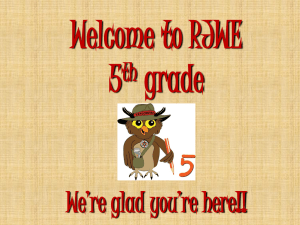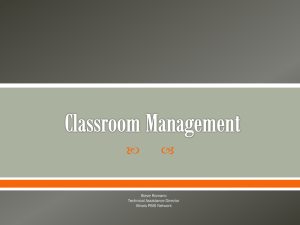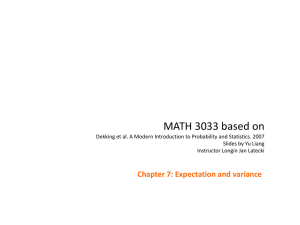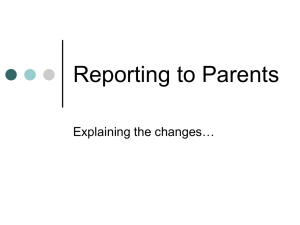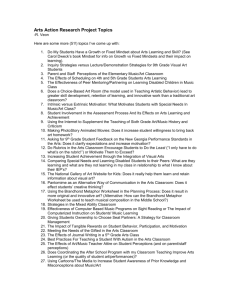KindergartenSampleNextSteps
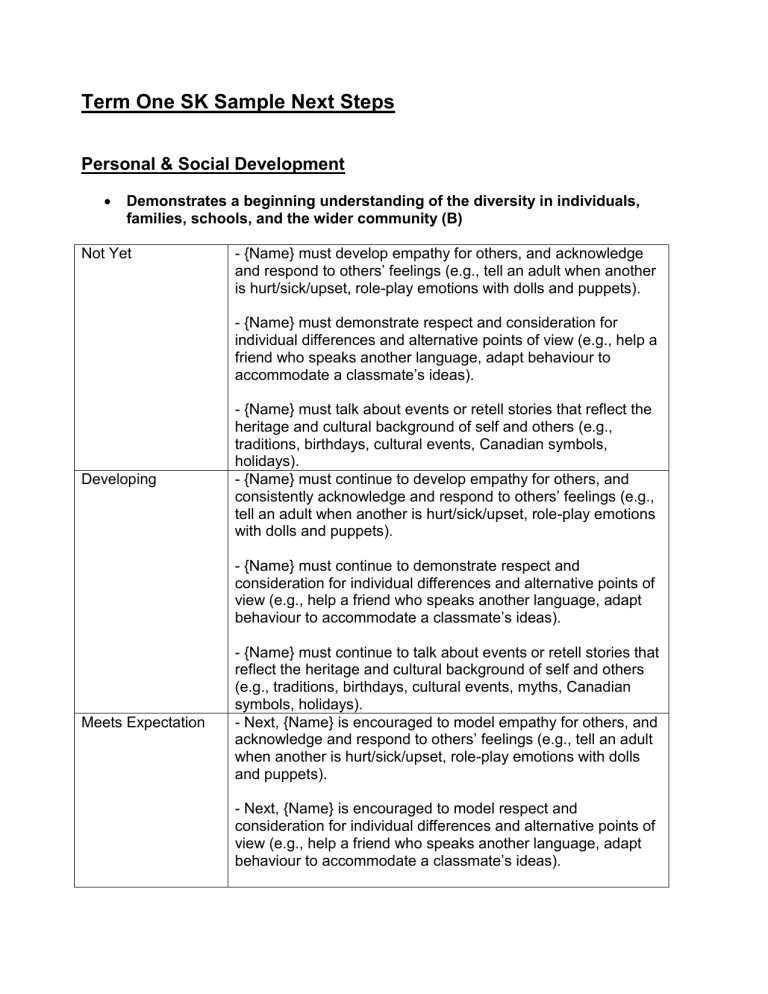
Term One SK Sample Next Steps
Personal & Social Development
Demonstrates a beginning understanding of the diversity in individuals, families, schools, and the wider community (B)
Not Yet - {Name} must develop empathy for others, and acknowledge and respond to others ’ feelings (e.g., tell an adult when another is hurt/sick/upset, role-play emotions with dolls and puppets).
- {Name} must demonstrate respect and consideration for individual differences and alternative points of view (e.g., help a friend who speaks another language, adapt behaviour to accommodate a classmate’s ideas).
- {Name} must talk about events or retell stories that reflect the heritage and cultural background of self and others (e.g., traditions, birthdays, cultural events, Canadian symbols,
Developing holidays).
- {Name} must continue to develop empathy for others, and consistently acknowledge and respond to others ’ feelings (e.g., tell an adult when another is hurt/sick/upset, role-play emotions with dolls and puppets).
- {Name} must continue to demonstrate respect and consideration for individual differences and alternative points of view (e.g., help a friend who speaks another language, adapt behaviour to accommodate a classmate’s ideas).
- {Name} must continue to talk about events or retell stories that reflect the heritage and cultural background of self and others
(e.g., traditions, birthdays, cultural events, myths, Canadian symbols, holidays).
Meets Expectation - Next, {Name} is encouraged to model empathy for others, and acknowledge and respond to others
’ feelings (e.g., tell an adult when another is hurt/sick/upset, role-play emotions with dolls and puppets).
- Next, {Name} is encouraged to model respect and consideration for individual differences and alternative points of view (e.g., help a friend who speaks another language, adapt behaviour to accommodate a classmate’s ideas).
Extends Expectation - {Name} should consistently model empathy for others, and acknowledge and respond to others
’ feelings (e.g., tell an adult when another is hurt/sick/upset, role-play emotions with dolls and puppets).
- {Name} should consistently model respect and consideration for individual differences and alternative points of view (e.g., help a friend who speaks another language, adapt behaviour to accommodate a classmate’s ideas).
- {Name} should consistently talk about events or retell stories, and make connections to the heritage and cultural background of self and others (e.g., traditions, birthdays, cultural events, myths, Canadian symbols, holidays).
Demonstrates an awareness of their surroundings (F)
Not Yet
Developing
- Next, {Name} is encouraged to talk about events or retell stories, with greater detail, that reflect the heritage and cultural background of self and others (e.g., traditions, birthdays, cultural events, myths, Canadian symbols, holidays).
- {Name} must identify people who work in the community, and talk about what they do (e.g., farmer, park ranger, police officer, nurse, Aboriginal healer, store clerk, engineer, baker).
- {Name} must recognize places and buildings within the community, both natural and human-made, and talk about their functions (e.g., farm, church, hospital, mosque, sweat lodge, arena, mine, cave).
- {Name} must develop an awareness of ways in which people adapt to the places in which they live (e.g., children in cities may live in high-rise buildings and use sidewalks and the subway; children in the country may take the bus to school).
- {Name} must demonstrate an awareness of different kinds of weather and ways in which people adapt to the weather (e.g., wearing sunscreen, wearing hats and boots, using an umbrella, flying kites, taking part in winter and summer sports).
- {Name} should identify more people who work in the community, and talk about what they do (e.g., farmer, park ranger, police officer, nurse, Aboriginal healer, store clerk, engineer, baker).
- {Name} should recognize a variety of places and buildings within the community, both natural and human-made, and talk
about their functions (e.g., farm, church, hospital, mosque, sweat lodge, arena, mine, cave).
- {Name} must continue to demonstrate an awareness of ways in which people adapt to the places in which they live (e.g., children in cities may live in high-rise buildings and use sidewalks and the subway; children in the country may take the bus to school).
- {Name} must continue to demonstrate an awareness of different kinds of weather and ways in which people adapt to the weather (e.g., wearing sunscreen, wearing hats and boots, using an umbrella, flying kites, taking part in winter and summer sports).
Meets Expectation - {Name} should use detail when talking about people who work in the community (e.g., farmers grow crops, police officers help to keep us safe, nurses work in hospitals).
- {Name} should use more detail when talking about a variety of places and buildings within the community, both natural and human-made, and their functions.
- {Name} should describe ways in which people adapt to the places in which they live (e.g., children in cities may live in highrise buildings and use sidewalks and the subway; children in the country may take the bus to school).
- {Name} should describe different kinds of weather and ways in which people adapt to the weather (e.g., wearing sunscreen, wearing hats and boots, using an umbrella, flying kites, taking part in winter and summer sports).
Extends Expectation - {Name} could explain how community workers assist families in the community (e.g., farmers grow crops to feed community, police officers help to keep our community safe, nurses help people who are injured or sick).
- {Name} could explain the functions of places and buildings within the community, both natural and human-made (e.g., farm, church, hospital, mosque, sweat lodge, arena, mine, cave).
- {Name} could explain ways in which people adapt to the places in which they live (e.g., children in cities may live in highrise buildings and use sidewalks and the subway; children in the country may take the bus to school).
- {Name} could explain different kinds of weather and ways in which people adapt to the weather (e.g., wearing sunscreen, wearing hats and boots, using an umbrella, flying kites, taking part in winter and summer sports).
Language
Oral Communication
communicate by talking and by listening and speaking to others for a variety of purposes and in a variety of contexts (A)
Not Yet - {Name} must use language to connect new experiences with prior knowledge (e.g., contribute ideas during shared or interactive writing; contribute to conversations at learning centres, respond to teacher prompts).
- {Name} must ask questions for a variety of purposes (e.g., for direction, for assistance, for obtaining information, for clarification, for help in understanding something) and in different contexts (e.g., during discussions and conversations with peers and adults; before, during, and after read-aloud activities and shared reading; while making observations on a class walk; in small groups at learning centres).
- {Name} must retell simple events and simple familiar stories in proper sequence (e.g., using key words, such as first, next, then, last).
Developing
Meets Expectation
- {Name} must use language to connect new experiences with prior knowledge when contributing ideas during shared or interactive writing, conversations at learning centres, and responding to teacher prompts.
- {Name} must ask questions for direction, assistance, obtaining information, clarification, and help in understanding; and in different contexts, during discussions and conversations with peers and adults; before, during, and after read-aloud activities and shared reading; while making observations on a class walk; and in small groups at learning centres.
- {Name} must retell simple events and simple familiar stories in proper sequence using key words, such as, first, next, then, and last.
- {Name} should connect new experiences with prior experiences when contributing ideas during shared or interactive writing, contributing to conversations at learning
Extends Expectation centres, and responding to teacher prompts.
- {Name} should ask questions to obtain information, clarification, help in understanding; and in different contexts, during discussions and conversations with peers and adults, before, during, and after read-aloud activities and shared reading, and in small groups at learning centres.
- {Name} should retell events and familiar stories in proper sequence with greater detail, using key words, such as, first, next, then, and last.
- {Name} could connect new experiences with prior experiences with greater detail when contributing ideas during shared or interactive writing, contributing to conversations at learning centres, and responding to teacher prompts.
- {Name} could ask questions in order to improve comprehension and to promote critical thinking (e.g., what, who, when, how, and why).
- When retelling events and familiar stories {Name} could make more connections to personal experiences (e.g., “This reminds me of…”).
Reading
Demonstrates understanding and critical awareness of a variety of written materials that are read by and with the teacher (B)
Not Yet - When being read to at home and school, {Name} must make connections using prior knowledge and personal experiences to understand the written material.
Developing
Meets Expectation
- When being read to at home and school, {Name} must make predictions regarding text using prior experience (e.g., use the cover pictures and/or title to determine the topic).
- When being read to at home and school, {Name} should make connections using prior knowledge and personal experiences to help %r understand a diverse range of written materials.
- When being read to at home and school, {Name} should make logical predictions regarding an unfamiliar text, using prior experience, knowledge of familiar texts, and general knowledge of the world (e.g., use the cover pictures and/or title to determine the topic and/or text form).
- When being read to at home and school, {Name} should further connect prior knowledge to new experiences, other books, and events in the world, to understand a diverse range of materials.
- When being read to at home and school, {Name} should explain personal predictions regarding an unfamiliar text, using prior experience, knowledge of familiar texts, and general knowledge of the world.
Extends Expectation - When being read to at home and school, {Name} could make meaningful connections to new experiences, other books, and events in the world to understand a diverse range of materials.
- When being read to at home and school, {Name} could continue to explain predictions regarding an unfamiliar text, using prior experience, knowledge of familiar texts, and general knowledge of the world.
Uses reading strategies that are appropriate for beginning readers in order to make sense of a variety of written materials (C)
Not Yet
Developing
Meets Expectation
Extends Expectation
- {Name} must demonstrate knowledge of the alphabet, letter name and corresponding sound, in different contexts (e.g., identify letters by name on signs and labels at learning centres, stories, poems, big books, traffic signs).
- Additional practice recognizing letters and their corresponding sounds (e.g., using books, games, posters) is essential for developing beginning reading strategies.
- {Name} should demonstrate knowledge of the alphabet, most letter names and corresponding sounds, in different contexts
(e.g., use a variety of capital and lower-case manipulative letters in letter play; identify letters by name on signs and labels at learning centres, stories, poems, big books, traffic signs).
- Continued practice recognizing letters and their sounds (e.g., using books, games, posters) is essential for developing beginning reading strategies.
- {Name} should demonstrate knowledge of the alphabet, each letter name and corresponding sound, in different contexts (e.g., using a variety of capital and lower-case manipulative letters in letter play; identify letters by name on signs and labels at learning centres, stories, poems, big books, traffic signs).
- Applying %m knowledge of letters and their sounds to reading three letter words would assist {Name} in developing beginning reading skills.
- Applying {Name} ’s knowledge of letters and their sounds to reading simple text will continue to develop beginning reading skills.
Writing
Communicates in writing, using strategies that are appropriate for beginners
(D)
Not Yet
Developing
Meets Expectation
- {Name} must contribute ideas to modeled or shared writing experiences to demonstrate awareness that writing can convey ideas or messages.
- {Name} must write simple messages, using a combination of pictures, symbols, and letters (e.g., initially, use pictures and strings of random letters; eventually, use such familiar words as
I, to, and my, and such spelling approximations as “I lv u mum” or “dnt tuch”).
- {Name} must use classroom resources to support %m writing
(e.g., a classroom word wall that is made up of children’s names, words from simple patterned texts, and words used repeatedly in shared or interactive writing experiences; signs or charts in the classroom; alphabet cards; books).
- {Name} should contribute ideas to modeled, shared, or interactive writing experiences, ask the teacher to write out new words, and ask questions about the meaning of something in print, in order to demonstrate an awareness that writing can convey ideas or messages.
- {Name} should write simple messages, using a combination of pictures, symbols, knowledge of the correspondence between letters and sounds, and familiar words (e.g., initially, use pictures and strings of random letters; eventually, use such familiar words as I, to, and my, and such spelling approximations as “I lv u mum” or “dnt tuch”).
- {Name} should use a variety of classroom resources to support
%m writing (e.g., a classroom word wall that is made up of children’s names, words from simple patterned texts, and words used repeatedly in shared or interactive writing experiences; signs or charts in the classroom; picture dictionaries; alphabet cards; books).
- {Name} should write more detailed messages using a combination of pictures and familiar words, such as “I”, “to”, and
“my”, and spelling approximations, such as “I lv u mum” or “dnt tuch”.
Extends Expectation
- {Name} should continue writing simple messages using beginning writing strategies learned in class (e.g., initial and ending sounds, word families, spacing words).
- {Name} should explore a variety of classroom resources to support %m writing (e.g., a classroom word wall, words from simple patterned texts, and words used in shared or interactive writing experiences; signs or charts in the classroom; picture dictionaries; alphabet cards; books).
- {Name} could write more detailed messages using familiar words and spelling approximations, such as “I lv u mum” or “dnt tuch”.
- {Name} should continue writing messages using writing strategies learned in class (e.g., sight words, spacing words, phonetic spellings).
- {Name} could explore classroom resources to extend their writing (e.g., a classroom word wall, words from texts, and words used in shared or interactive writing experiences; signs or charts in the classroom; picture dictionaries; alphabet cards; books).
Mathematics
Demonstrates an understanding of number, using concrete materials to explore and investigate counting, quantity, and number relationships (A)
Not Yet
Developing
-{Name} must estimate the number in a small set (e.g., dominoes, dice, playing cards, fingers).
- {Name} must use, read, and represent whole numbers to 10
(e.g., use a hundreds chart; use textured numerals; find and recognize numbers in the environment; use magnetic numerals to represent the number of objects in a set; write numerals on imaginary bills).
- {Name} must demonstrate an understanding of numbers from
0 to 10, through investigation (e.g., initially, show smaller quantities using anchors of five and ten, such as %m fingers or manipulatives; eventually, show quantities to 10, using such tools as five and ten frames and manipulatives).
{Name} must use concrete materials in order to explore and investigate counting and quantity from 0 to 10 (e.g., simple games, more/less/same).
-{Name} should make reasonable estimations of the number in a small set (e.g., dominoes, dice, playing cards, fingers).
- {Name} should consistently use, read, and represent whole numbers to 10 (e.g., use a hundreds chart; use textured numerals; find and recognize numbers in the environment; use magnetic numerals to represent the number of objects in a set; write numerals on imaginary bills).
- {Name} should consistently demonstrate an understanding of numbers from 0 to 10, through investigation (e.g., initially, show smaller quantities using anchors of five and ten, such as %m fingers or manipulatives; eventually, show quantities to 10, using such tools as five and ten frames and manipulatives).
Meets Expectation
- {Name} should practice using concrete materials to explore and investigate counting and quantity from 0 to 10 (e.g., simple games, more/less/same).
-{Name} should make reasonable estimations of the number in larger sets (e.g., lego pieces, marbles, dominoes).
- {Name} requires continued opportunities to use, read, and
represent whole numbers to 10 (e.g., use a hundreds chart; use textured numerals; find and recognize numbers in the environment; use magnetic numerals to represent the number of objects in a set; write numerals on imaginary bills).
- {Name} should use five and ten frames, with manipulatives, to further investigate number relationships.
{Name} requires continued opportunities using concrete materials to explore and investigate counting and quantity from
0 to 10 (e.g., simple games, more/less/same).
Extends Expectation -{Name} is encouraged to continue making reasonable estimations of the number in larger sets (e.g., pennies, lego pieces, craft materials).
- {Name} could demonstrate %m understanding of larger number quantities by using anchors of five and ten.
- Exploring counting and quantity in various ways will allow
{Name} to extend %m understanding of number (e.g., using 5 and 10 frames, knowing a quantity without counting, estimation).
Describes, sorts, classifies, and compares two-dimensional shapes and threedimensional figures, and describes the location and movement of objects through investigations (C)
Not Yet
Developing
{Name} must explore, sort, and compare two-dimensional shapes and three-dimensional figures (e.g., sides, corners, faces, movement) through investigation.
{Name} should continue exploring, sorting, and comparing two-dimensional shapes and three-dimensional figures (e.g., sides, corners, faces, movement) through investigation.
Meets Expectation
Extends Expectation
{Name} should further describe and compare two-dimensional shapes, three-dimensional figures, and non-traditional shapes
(e.g., sides, corners, faces, movement) through investigation.
{Name} could use precise vocabulary to explain %m knowledge of two-dimensional shapes, three-dimensional figures, and nontraditional shapes.
Explores, recognizes, describes, and creates patterns, using a variety of material in different contexts (D)
Not Yet - {Name} must identify, extend, and reproduce patterns (e.g.,
ABAB, AABB) through investigation, using a variety of materials
(e.g., attribute materials, pattern blocks, toys, bottle tops,
Developing
Meets Expectation
Extends Expectation buttons, toothpicks) and actions (e.g., clapping, jumping, tapping).
- {Name} should consistently identify, extend, reproduce, and create patterns (e.g., ABAB, AABB, AAB, ABB) through investigation, using a variety of materials (e.g., attribute materials, pattern blocks, toys, bottle tops, buttons, toothpicks) and actions (e.g., clapping, jumping, tapping).
- {Name} should identify, extend, reproduce, and create more complex patterns through investigation, using a variety of materials (e.g., attribute materials, pattern blocks, a hundreds chart, toys, bottle tops, buttons, toothpicks) and actions (e.g., dance steps)
- {Name} could create, extend, and explain complex patterns
(e.g., AAB, ABB, ABC, positional).
Science & Technology
Conducts simple investigations through free exploration, focused exploration, and guided activity, using inquiry skills (observing, questioning , planning an investigation, carrying out the investigation, and communicating findings) (B)
Not Yet
Developing
Meets Expectation
Extends Expectation
{Name} must pose questions and make observations during investigations, at school and home.
{Name} should consistently pose questions and make observations during investigations, at school and home.
{Name} should pose questions, make observations, and communicate findings during investigations, at school and home.
{Name} could pose questions, make observations, and communicate findings to others during investigations, at school and home.
Investigate and talk about the characteristics and functions of some common materials, and use these materials safely (D)
Not Yet
Developing
- {Name} must have more exposure to and exploration of common materials/objects (e.g., water, toys, cooking utensils, tools) to develop some comprehension of their characteristics and functions.
- {Name} should have increased exposure to and exploration of common materials/objects (e.g., water, toys, cooking utensils, tools) to develop greater comprehension of their characteristics and functions.
Meets Expectation
Extends Expectation
- {Name} should have continued exposure to and exploration of common materials/objects (e.g., water, toys, cooking utensils, tools) to develop a more extensive comprehension of their characteristics and functions.
- {Name} could have continued exposure to and exploration of common materials/objects (e.g., water, toys, cooking utensils, tools) to enhance comprehension of their characteristics and functions.
Recognizes and uses safely some common forms of technology (E)
Not Yet
Developing
Additional practice using some forms of technology (e.g., egg beaters, gears, scales) is required.
Continued practice using some forms of technology appropriately (e.g., egg beaters, gears, scales) is required.
Meets Expectation
Extends Expectation
{Name} should explore and apply the use of some forms of technology (e.g., egg beaters, gears, scales).
{Name} could continue to apply and explain the use of some forms of technology (e.g., egg beaters, gears, scales).
Health & Physical Activity
Demonstrates an awareness of health and safety practices for themselves and others and a basic awareness of their own well-being (A)
Not Yet
Developing
Meets Expectation
Extends Expectation
- {Name} needs further opportunities to explore the connection between proper nutrition and having a healthy body (e.g., by making nutritious choices at snack time).
- {Name} must talk about safe and unsafe situations as they arise and discuss ways to be safe (e.g., memorize full name, address, and telephone number; use scissors, playground equipment safely).
- {Name} must identify and apply basic safety rules (e.g., rules for bus and traffic safety, water and fire safety, electrical safety,
Internet safety, outdoor play).
- {Name} should develop an understanding of the connection between proper nutrition and having a healthy body by making nutritious choices at snack time.
- {Name} should talk about safe and unsafe situations as they arise and discuss ways to be safe (e.g., memorize full name, address, telephone number; use scissors, playground equipment safely).
- {Name} should identify and apply basic safety rules (e.g., rules for bus and traffic safety, water and fire safety, electrical safety,
Internet safety, outdoor play).
- {Name} should demonstrate understanding of the connection between proper nutrition and having a healthy body by making and recommending nutritious choices at snack time.
- {Name} should talk about safe and unsafe situations as they arise and discuss ways to be safe by memorizing %m full name, address, telephone number; using scissors and playground equipment safely.
- {Name} should identify and consistently apply safety rules
(e.g., rules for bus and traffic safety, water and fire safety, electrical safety, Internet safety, outdoor play).
- {Name} could extend understanding of the connection between proper nutrition and having a healthy body by making nutritious choices at snack time and planning menus.
- {Name} could further explain safe and unsafe situations as they arise and discuss ways to be safe, including identifying and
Participates willingly in a variety of activities that require the use of both large and small muscles (B)
Not Yet
Developing
- By participating more frequently in fitness breaks and gym activities (e.g., dance, games, outdoor play), {Name} ’s large muscle development should improve.
- By practising and following teacher prompts during activities which require fine motor skills (e.g., painting, drawing, cutting),
{Name}
’s small muscle control should improve.
- By following teacher prompts during fitness breaks and gym activities (e.g., dance, games, outdoor play), {Name} ’s large muscle development should improve.
- By practising activities which require fine motor skills (e.g., painting, drawing, cutting), {Name}
’s small muscle control should improve.
Meets Expectation
Extends Expectation applying safety rules (e.g., rules for bus and traffic safety, water and fire safety, electrical safety, Internet safety, outdoor play).
- {Name} should further develop %m large muscle control by actively participating in activities (e.g., dance, games, outdoor play).
- By practising activities which require fine motor skills (e.g., painting, drawing, cutting), {Name} ’s small muscle control should be further developed.
- {Name} is encouraged to actively participate in a wide range of activities (e.g., dance, games, outdoor play) to further improve
%m large muscle control.
- By practising a wide variety of activities which require fine motor skills (e.g., painting, drawing, cutting), {Name} ’s small muscle control should continue to develop.
The Arts
Demonstrates an awareness of themselves as artists through engaging in activities in visual arts, music, drama and dance (A)
Not Yet
Developing
Meets Expectation
Extends Expectation
- {Name} must begin demonstrating an awareness of personal interests and a sense of accomplishment in visual arts, music, drama and dance by willingly illustrating a page in a class book using %m own ideas; moving to music in %m own way or keep the beat during a chant; contributing %m own ideas to role playing.
- {Name} must begin exploring a variety of tools, materials, and processes of personal choice to create visual art forms, music, drama and dance in familiar and new ways (e.g., use natural and recycled materials at a learning centre; use spoons, castanets, rhythm sticks, music software to keep the beat; create %m own actions for a song).
- {Name} should further demonstrate an awareness of personal interests and a sense of accomplishment in visual arts, music, drama and dance by illustrating a page in a class book using
%m own ideas; moving to music in %m own way or keep the beat during a chant; contributing %m own ideas to role playing.
- {Name} should explore a variety of tools, materials, and processes of personal choice to create visual art forms, music, drama and dance in familiar and new ways (e.g., use natural and recycled materials at a learning centre; use spoons, castanets, rhythm sticks, music software to keep the beat; create %m own actions for a song).
- {Name} should further display personal interests and a sense of accomplishment in visual arts, music, drama and dance by offering to make a puppet for a play; choosing rhythm instruments to create sound effects for a song; moving in ways of personal choice to a song.
- {Name} should further explore a variety of tools, materials, and processes of personal choice to create visual art forms, music, drama and dance in familiar and new ways (e.g., use natural and recycled materials at a learning centre; use spoons, castanets, rhythm sticks, music software to keep the beat; create %m own actions for a song).
- {Name} could further display %m personal interests and
present %m accomplishment in visual arts, music, drama and dance by offering to make a puppet for a play; choosing rhythm instruments to create sound effects for a song; moving in ways of %m choice to a song.
- {Name} could further explore a variety of tools, materials, and processes of personal choice to create and present visual art forms, music, drama and dance in familiar and new ways (e.g., use natural and recycled materials at a learning centre; use spoons, castanets, rhythm sticks, music software to keep the beat; create %m own actions for a song).
Communicates their ideas through various art forms (E)
Not Yet - {Name} must communicate %m ideas and feelings through visual art, music, drama and dance by painting a picture of a character in a story, creating a song, drawing a picture to music, creating movement to music, moving like animals in a poem.
Developing
Meets Expectation
Extends Expectation
- {Name} should communicate %m ideas and feelings through visual art, music, drama and dance by painting a picture of a character in a story, creating a song, drawing a picture to music, creating movement to music, moving like animals in a poem.
- {Name} should communicate and present %m ideas and feelings through visual art, music, drama and dance by painting a picture of a character in a story, creating a song, drawing a picture to music, creating movement to music, moving like animals in a poem.
- {Name} could create, present, and explain %m ideas and feelings through visual art, music, drama and dance by painting a picture of a character in a story, creating a song, drawing a picture to music, creating movement to music, moving like animals in a poem.
